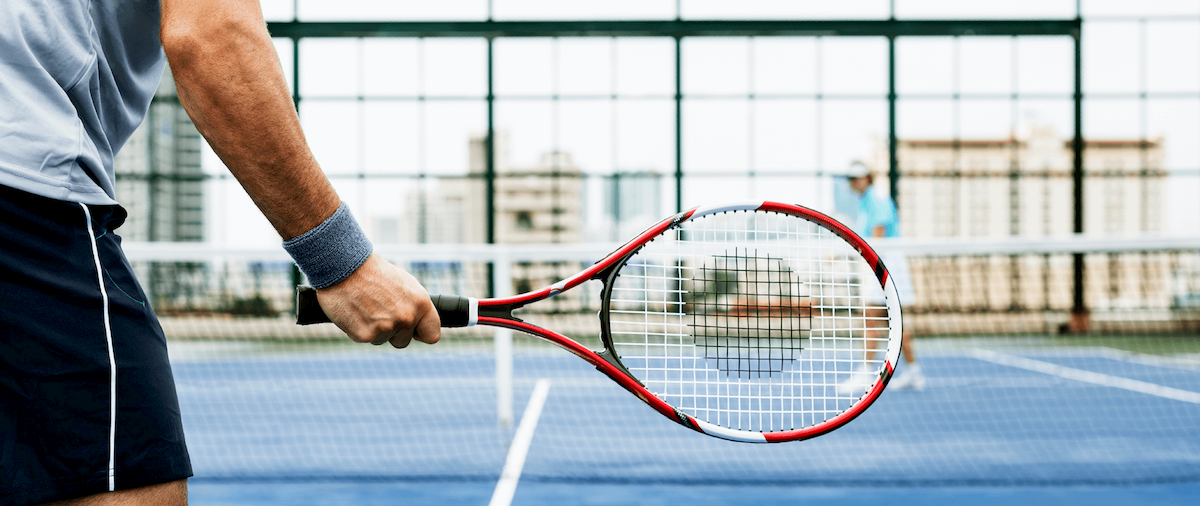Written by Senior Physiotherapist, Serafin Alvarez.
Sera has worked as a personal physiotherapist for several ATP (Association of Tennis Professionals) and WTA (Women’s Tennis Association) players across the world for over seven years. Additionally, he has worked as a physiotherapist at the Mutua Madrid Open (Masters 1000) for 5 years. He currently practices at Kieser Malvern.
With the Australian Open around the corner, many of us will be inspired to start picking up the racquet. Tennis is a sport that requires not only eye-hand coordination but full-body participation to run, position your body, swing and hit the ball. As physiotherapist, Sera Alvarez from Kieser Malvern says, “Although injuries seen in tennis are common in other sports, its year-round nature, combined with the different surfaces, equipment used, and specific biomechanics, lead to a unique spectrum of injuries.” Acute injuries affect mostly the lower extremity whereas chronic injuries tend to affect the upper extremity.
Understanding how tennis gear, the kinetic chain, and strokes affect the pathophysiology of these common injuries can help one treat them successfully. Most injuries can be minimised or prevented by proper conditioning and technique, appropriate equipment and seeking medical attention when needed.
Read below for a few common injuries for tennis players and Sera's recommendations on how to prevent them.
Tennis/Golfer’s elbow
Although lateral epicondylalgia (AKA tennis elbow) used to be one of the most common injuries among racquet sports players due to the overuse of the muscles in the elbow, it has been replaced by its “cousin”, the medial epicondylalgia (AKA golfer’s elbow) in the last few decades. The introduction of new racquet materials in the 70s changed the players’ grip and the way they played, leading to a new era in the game but also to a new set of injuries. “As you load the racquet and hit the ball, you increase the tension on the tendons that attach the muscles of the forearm to the humerus. Over time, this can lead to swelling and pain in the tendons and eventually, to degeneration in the collagen matrix”, says Sera Alvarez. Some of Kieser’s most specialised machines, the H3, H4, H5 and H6 can all help target the muscles in the forearm to prevent these injuries.”
Tennis shoulder or rotator cuff injury
The (in)famous rotator cuff is a group of four muscles that keep the head of the humerus centred and stable within the shallow socket of the shoulder. Three of them allow us to externally rotate the shoulder, whereas the remaining one is an internal rotator. Tennis players often develop increased external rotation (ER) in the dominant shoulder at the expense of internal rotation (IR). Ongoing IR deficit is associated with pain and a higher risk of injury in the shoulder. Managing tennis shoulder focuses on building rotator cuff and other scapular muscles strength and balance. The E4 and E5 machines are particularly beneficial to clients with tennis shoulder as they can safely target all the rotator cuff muscles.
Ankle sprain
Most joints in the human body rely on both active and passive stabilisers for their stability and range of motion (ROM) control. Active stabilisers are those that we have control over, such as our muscles. On the other hand, passive stabilisers are those that we can’t control, such as the joint capsule or the ligaments. A sprain is an acute injury to the ligaments of a joint that occurs when we move that joint beyond its ROM limits. Unfortunately, ankle sprains are rather common in tennis due to many factors such as the lateral movement, pivoting and twisting nature of the game or the different playing surfaces (particularly clay or en-tout-cas, which allow players to slide). Kieser’s unique B3 and B4 machines allow you to prevent this injury by strengthening the active stabilisers around the ankle.
Patellar tendinopathy (Jumper’s knee)
Jumper's knee or patellar tendinopathy is an overuse injury of the patellar tendon and is often due to stress from jumping, sprinting, and pivoting during tennis play. In addition to ensuring you are wearing correct footwear, training the muscles of the upper leg is important to prevent jumper’s knee. Building strength in the hamstrings and quadriceps muscles as well as maintaining the correct muscle balance (left vs right and flexion vs extension) will help you diminish the likelihood of a knee injury. Talk to your physiotherapist or exercise scientist to book a complimentary strength test!
Back pain
In some cases, the tennis serve and smash can cause hyperextension of the lower back and cause significant back issues without proper preparation. In addition, both forehand and backhand shots require trunk rotation and twisting of the spine which can lead to pain or injury in the lower and middle back. Chatting to your physio and/or tennis coach to ensure correct swing technique is crucial in preventing injuries. Kieser’s F1/F1.1 machine is ideal for tennis players as it helps to build strength in the oblique muscles and mobility in the thoracic spine. Strong obliques and a flexible thorax not only improve the power of your strokes but help support the lower back stability to prevent damage.
Tennis-specific conditioning exercises of the important muscle segments are paramount to ensure a long and injury-free tennis career. These exercises should target the core and lower back as well as the upper and lower limbs and should be tailored to the individual needs of the player. If you are ramping up your tennis this summer chat to one of our team about adjusting your training program to ensure you keep the body strong for tennis.






























